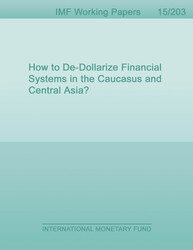
How to De-Dollarize Financial Systems in the Caucasus and Central Asia?
Dollarization rates in the Caucasus and Central Asia (CCA) region are among the highest in the world, with adverse consequences for macroeconomic stability, monetary policy transmission, and financial sector development. Using dynamic panel data models, we find that foreign exchange deposits and loans in the CCA are mainly driven by volatile inflation and exchange rates, low financial depth, and asymmetric exchange rate policies biased toward depreciation. Although there is no unique formula for success, empirical studies and cross-country experiences suggest that credible monetary and exchange rate frameworks, low and stable inflation, and deep domestic financial markets are essential ingredients of any de-dollarization strategy. In implementation, policymakers need to consider proper sequencing of policies, effective communication as well as risks from potential financial disintermediation and instability, and/or capital flight.
Publication date: September 2015
ISBN: 9781513507279
$18.00
Add to Cart by clicking price of the language and format you'd like to purchase
Available Languages and Formats
| English |
Prices in red indicate formats that are not yet available but are forthcoming.
Topics covered in this book
This title contains information about the following subjects.
Click on a subject if you would like to see other titles with the same subjects.
Economics- Macroeconomics , Economics / General , International - Economics , financial dollarization , financial development , de-dollarization , exchange , exchange rate , currency , inflation , deposits , General
Summary
Copyright © 2010 - 2025
Powered by:
AIDC



